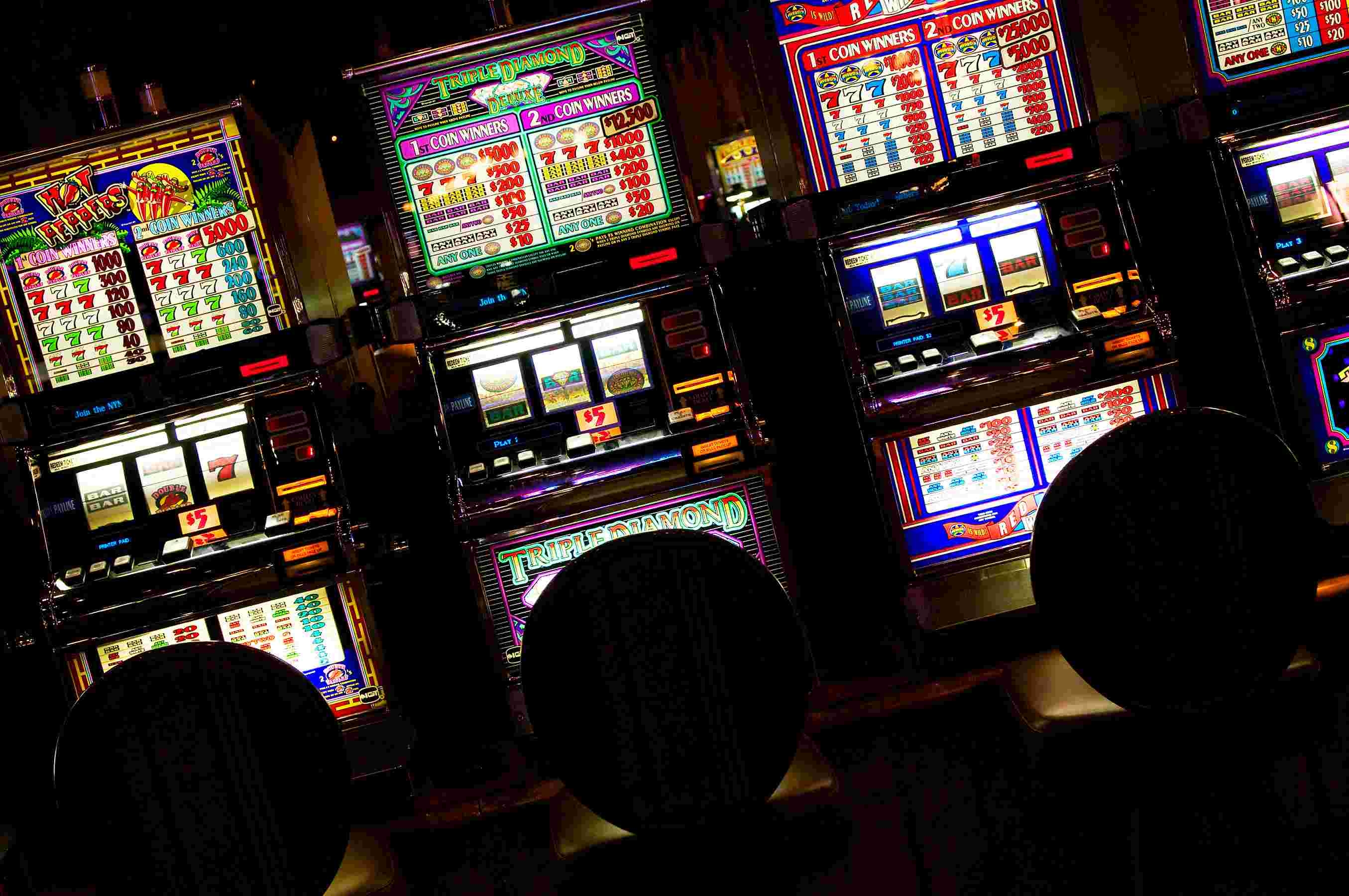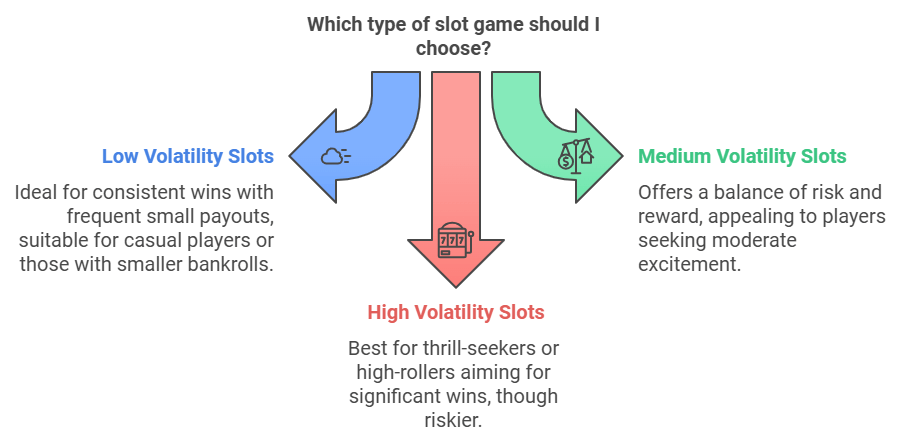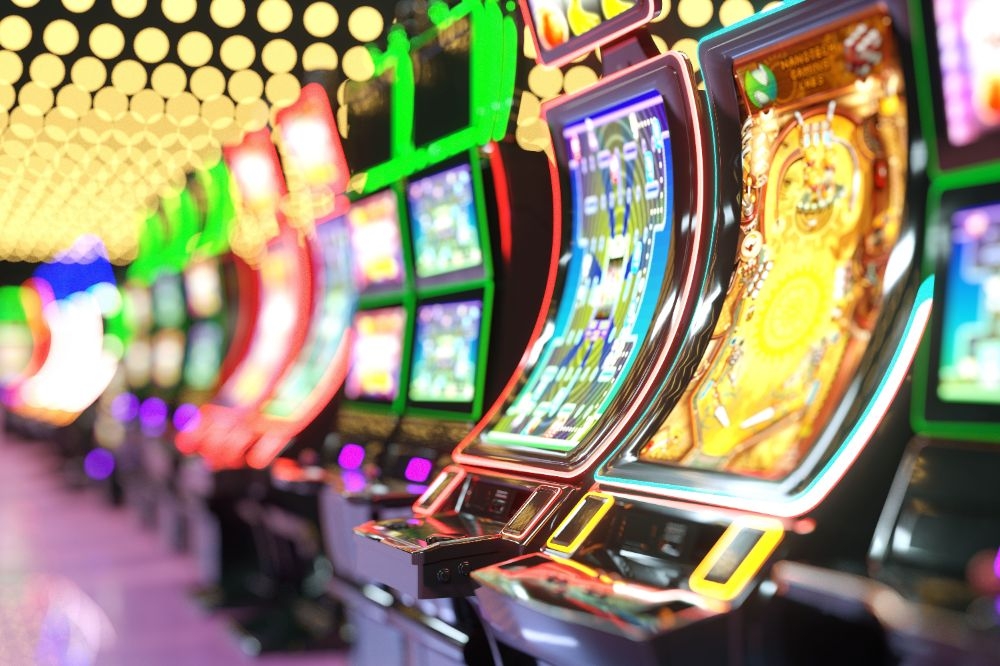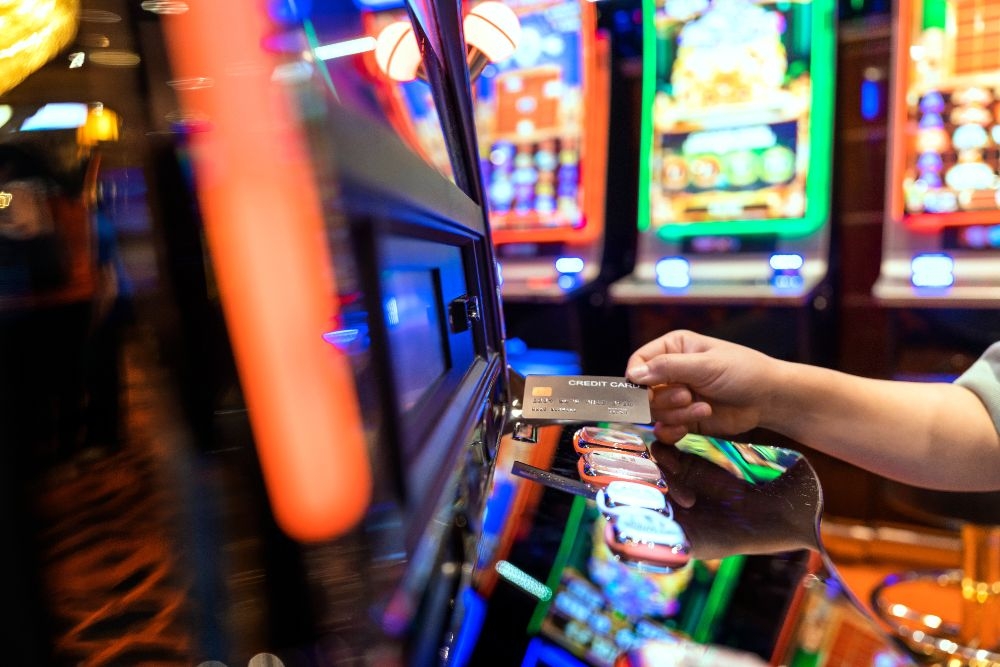- What is Slot Volatility
- Understanding Slot Volatility
- Types of Slot Volatility
- Understanding the Difference of Volatility vs. RTP
- Methods to Determine Slot Machine Volatility
- Strategies for Playing Different Volatility Slots
- The Role of Bonus Features in Slot Volatility
- Advanced Insights: Volatility in Progressive Jackpots and Online Slots
- How to Determine the Volatility of a Slot Machine Conclusion
What is Slot Volatility
Slot volatility, also known as variance, refers to the level of risk and payout frequency in a slot game. Low volatility slots offer frequent but smaller wins, while high volatility slots provide larger payouts but less often. Medium volatility strikes a balance between the two. Understanding slot volatility helps players choose games that align with their budget and playing style, whether they prefer consistent wins or the thrill of chasing big jackpots.

Understanding Slot Volatility
When you walk up to a slot machine in person or load one up online, each has varying degrees of volatility. To put it plainly, some may pay out more often but have more capped winnings, whereas some may not pay out as often but can offer massive winnings.
Slot volatility consists of three levels that distinguish the slots. These include Low, Medium, and High. Low offers more consistent but less high payouts, whereas High offers fewer payouts but potentially massive wins.
Learning about this could shift your entire viewpoint on playing specific slots.
Why Volatility Matters
Volatility matters to the casino, retail or online, and the player.
From the player’s perspective, learning about volatility can allow you to gauge what games you do and don’t want to play. That also goes hand-in-hand with managing your bankroll, as the higher volatility games may eat more of it in hopes of a big win.
On the flip side, knowing a slot has higher volatility could allow for more additional entertainment. As you know, these games offer giant potential payouts.
Casinos, whether online or in-person, must know how many of each type to have so that players don’t gravitate more toward one than the other. That said, casinos also need to accommodate players' preferences for what they want to play.
Finally, it also matters in the revenue department, as the more volatile slots could lead to more short-term profits, but if a few big wins occur, they could also lead to losses.
The Risk-Reward Correlation of Volatility
As with any casino game, you have to measure the risk and reward aspect of it. Again, in the simplest terms: Higher volatility means fewer payouts, but potential for a big one, whereas low volatility may offer more consistent yet lower payouts, and the big payouts don’t often occur.
You need to gauge this for yourself and your preferred play style. As always, ensure that it’s within your bankroll budget.
Take your pick and enjoy our incredible slots below:
Click here to dive into our wide array of free slots.
Types of Slot Volatility
When looking into play slots, there are three types of volatility to be aware of: Low, Medium, and High.
Low Volatility: This mode offers more frequent yet lower payouts. The overall gameplay experience is a bit more predictable. It is a great mode for more casual, newer, or risk-averse players.
Medium Volatility: Payouts are not as frequent as in “Low,” but they are more frequent than in “High.” The wins here are more balanced, offering something between massive and lesser ones. This appeals to a more broad range of players.
High Volatility: This is for the big-money payouts. However, there’s ample risk as the payouts aren’t as frequent. We’d recommend these games for players with more experience managing their bankrolls and those with larger bankrolls.

Understanding the Difference of Volatility vs. RTP
In addition to volatility, slot players should consider RTP, also known as Return to Player Percentage. Below, we’ll examine the differences in these two and how they correlate to one another.
What is RTP?
Return to Player Percentage (RTP) is a metric used to determine how much money is paid back to players over time in addition to the house edge. For example, if a game has an RTP of 96%, this means that, over time, for every $100 wager on the game, $96 is paid back to players.
So, RTP is different from volatility in that it encompasses a more long-term approach to playing the game, while volatility is used to determine the round-by-round play of the game.
The intersection of RTP and Volatility
When deciding which slot games to play, you can still use RTP and volatility to determine what to expect from a game.
For example, if a game has an RTP of 98% and is low volatility, you know that low volatility means more frequent wins. The 98% RTP rate further supports that, paying out $98 on every $100 wagered, on average.
Conversely, if you have a game with high RTP and high volatility, the RTP is high, but it illustrates that you might get some high return over the long haul. Again, the wins will be less frequent.
Interpreting RTP and Volatility
After learning about both metrics above, you should examine the volatility, especially if you don’t plan on playing one game for an extended period. However, if you plan on playing one slot repeatedly, the RTP will come in handy as it illustrates how much money is paid back to you.
As always, it’s essential to manage your bankroll responsibly.

Methods to Determine Slot Machine Volatility
Whether you’re in an online or retail setting, determining a slot's volatility is essential. Hence, you know exactly what you’re getting into.
Online slots list the volatility of the game, and the online casino clearly illustrates RTP and volatility.
However, this isn’t as clear in a retail setting. To examine this, you’ll want to analyze the pay table, observe your play or others', and pay attention to the jackpot and other slot game mechanics.
Pay Table: When you look at the pay table, look for the payout structure involving the rare symbols. This is a great sign that you could be playing a high-volatility slot. Also, see if there are free spins or multipliers. These mechanics are often introduced to high-volatility slots.
Observation: Whether you want to use a portion of your bankroll or watch others, you’ll get a general feel of how often a game is paying out.
Jackpots: If you look at a slot and see the jackpot continuously rising, you’re dealing with a progressive jackpot, which is, more often than not, considered high volatility.
Overall, this information is available if you're online. If you’re in a retail setting, watch other players, examine the pay table, and check the jackpot amount.
If you’re unsure about a slot’s volatility, look for clues in the paytable. Games with huge jackpot symbols and large gaps between prize values typically indicate high volatility, while slots with frequent but lower-value payouts lean toward low volatility. Understanding these patterns can give you a clearer idea of what to expect before committing your bankroll.

Determining the Volatility of Slot Machines in Las Vegas
If you’re in Las Vegas and looking to determine the volatility of a slot, follow our tips above for retail casinos. These include checking out the pay table on the slot you’re interested in, playing, and observing how often you win and how often others win. If the jackpot continues to climb, you’re dealing with a progressive jackpot slot that will be a high-volatility game.
These retail casino tips apply to all in-person slots in Las Vegas or anywhere else.
That said, if you’re in Vegas right now and need some additional tips, consider these:
Ask an on-site attendant to go through the screens on the slot with you. After that, write down the information you saw to reference it later. This is especially helpful if you’re a new player who may not know exactly what you’re looking at at first glance.
You can also tell the worker that you want to turn off the speed stop to play faster than normal. This will encourage them to assist you more as you’ll likely spend more money since you want to play faster.
Another tip is to tell them you’re in town for a short time and want to hit a specific tier amount or that you thought you put in $100 as opposed to $50. When you tell them that, they’ll sort through the screen to see your play history.
Here’s another fun fact about new slot machines: If you’re at the casino and they’re about to install something new, a lot of times you’ll find a paper taped-to machine that may list information about the slot including RTP and volatility. It’s not always the case but again, this is another way to ensure you’re prepared to begin playing.
For more tips, check out this YouTube video from VegasLowRoller, which shows how to pick which slots to play in real time.
The Mathematic Approach
While we’re the furthest thing from mathematicians, there are some ways to approach analyzing the volatility of a slot using math. These include the following:
Probability: This is something used often in a casino setting. When developing a game, a game developer will analyze their bonus features and payout structures to determine the frequency and size of their payouts.
Monte Carlo Simulations: This is another system a developer can use. With this system, you’ll run numerous simulations while accounting for the payout table, features, and probabilities to calculate, on average, what payouts may be.
Check out the Stats: After a game is up and running, a developer can look back at it and see historical trends of wins to determine how often it pays out, including the average win size and more.
Game Design and Slot Themes
The overall design of a game and the theme can play significant roles in how volatility is calculated and perceived by players.
Above, we discussed how symbols and other features like bonus spins and multipliers can impact it, but offering up a progressive jackpot will also give you a chance to win almost infinite money, so long as it keeps going. A mechanic like this is a great selling point and makes payouts less frequent.
The theme of the game can also play a role. For example, if you’re a fan of a sports team or TV show and your favorite retail or online casino has a game using that license, it could make it higher volatility as you’ll be more inclined to play a game with that theme since it’s familiar to you.

Strategies for Playing Different Volatility Slots
While slots are all the same concept—spin the wheel and hope for a win—we’ve learned the importance of identifying volatility. With that, some tips and strategies to deploy in each type exist.
Low to High Volatility Advice
Low Volatility: This is a great time to relax. The wins are more frequent but not as massive. For this type of slot, you can come with a smaller bankroll and enjoy yourself.
Medium Volatility: When playing a slot with medium volatility, you’ll have to be prepared to pivot your wager amount based on your overall bankroll. We recommend fluctuating your wagers here a bit to get a chance at bigger payouts but also staying smaller to ensure you don’t run out of cash too quickly.
High Volatility: When approaching a high volatility slot, be prepared with a large bankroll and be equipped with a lot of patience. The wins can be big here, but they may not happen as often. Be prepared to make the maximum wager per round to win progressive jackpots. Otherwise, keep the wagers smaller, but be prepared to wait for a win.
Bankroll Management
As with any casino game style, we recommend going into play all types of slots with a budget and staying true to yourself to stick to that number. You should never chase your losses under any circumstance.
As you climb the volatility ladder, be sure that you’re going into each with a slightly larger bankroll than the one before it.
With low volatility, you can have a smaller budget and divide it up over numerous sessions. With high volatility, have a large bankroll to sustain the losses you’ll likely face.
This also goes back to responsible gaming, too. Putting yourself in a position to play strictly for entertainment and not chasing losses is something we adamantly recommend to all prospective slot players.
The Role of Bonus Features in Slot Volatility
You may encounter numerous features when playing a slot, and each can impact volatility differently.
Slot Features Role in Volatility
Free Spins: If free spins are available in a game, players can win without wagering any additional money. However, if there are other features, this could lead to higher volatility. It may not be as volatile if a slot only offers free spins.
Multipliers: Multipliers allow for winnings to be, well, multiplied. These are available in all types of slots, but again, the volatility depends on the overall payout structure.
Wild Symbols: When playing slots, a wild symbol can replace any other symbol and create winning combinations. They can also help be the final piece of a winning payline regardless of the slot's volatility.
While slot volatility influences the frequency of wins, it doesn’t affect your odds of hitting a progressive jackpot. Progressive slots remain random, meaning every player has the same chance of landing that massive jackpot—regardless of the game's volatility.

How Slot Features Impact Player Experience
Whenever a lot has features, this creates additional excitement. Sure, you could have a game where you pull the lever, hoping for a winning payline, and move on, but the features mentioned above provide more variability to each spin, making each much more riveting.
Free spins are like house money. If you get these and win, it’s icing on the cake. The multiplier can make a standard win into something more massive. Finally, Wild Symbols can be, as mentioned, that exciting final piece to cap off a massive payline victory.
Ultimately, these add to the overall entertainment of a game.
Advanced Insights: Volatility in Progressive Jackpots and Online Slots
We’ve mentioned progressive jackpot slots a couple of times now, which players will chase, as the payouts can be astronomical.
But how do these and volatility play together?
Examining Progressive Jackpot Slots
Whenever you play a progressive jackpot slot, you should already be prepared for a high-volatility game. The jackpot continues to climb as a portion of players' losses are added to the overall progressive jackpot.
Additionally, for most progressive jackpots, you must wager the maximum amount to ensure the grand prize.
There’s a lot of risk here as it’s high volatility, but if you have the bankroll to withstand the round-by-round wagers and for a longer period, go for it.
Online Slots vs. Traditional Slots
We also discussed this above, but volatility and RTP information are far more available in an online setting than in a traditional slot.
In a traditional setting, you may find more simplified design slots and something more intricate online.
Since online slots don’t take up actual space on a casino floor, the number of games is much higher, offering plenty of slots with low, medium, and high volatility.
How to Determine the Volatility of a Slot Machine Conclusion
Before we leave you here, remember to be aware of a game's volatility if you want to play with any level of strategy. Slots are inherently random, but the randomness is only amplified as the volatility increases.
Understanding volatility is vital to managing your bankroll and managing your expectations.
So, when you head to a casino in person or play online, be sure to remember this page and open it again so you can maximize your bankroll to the best of your ability.
Let’s get out there and win money on our favorite slot games.










